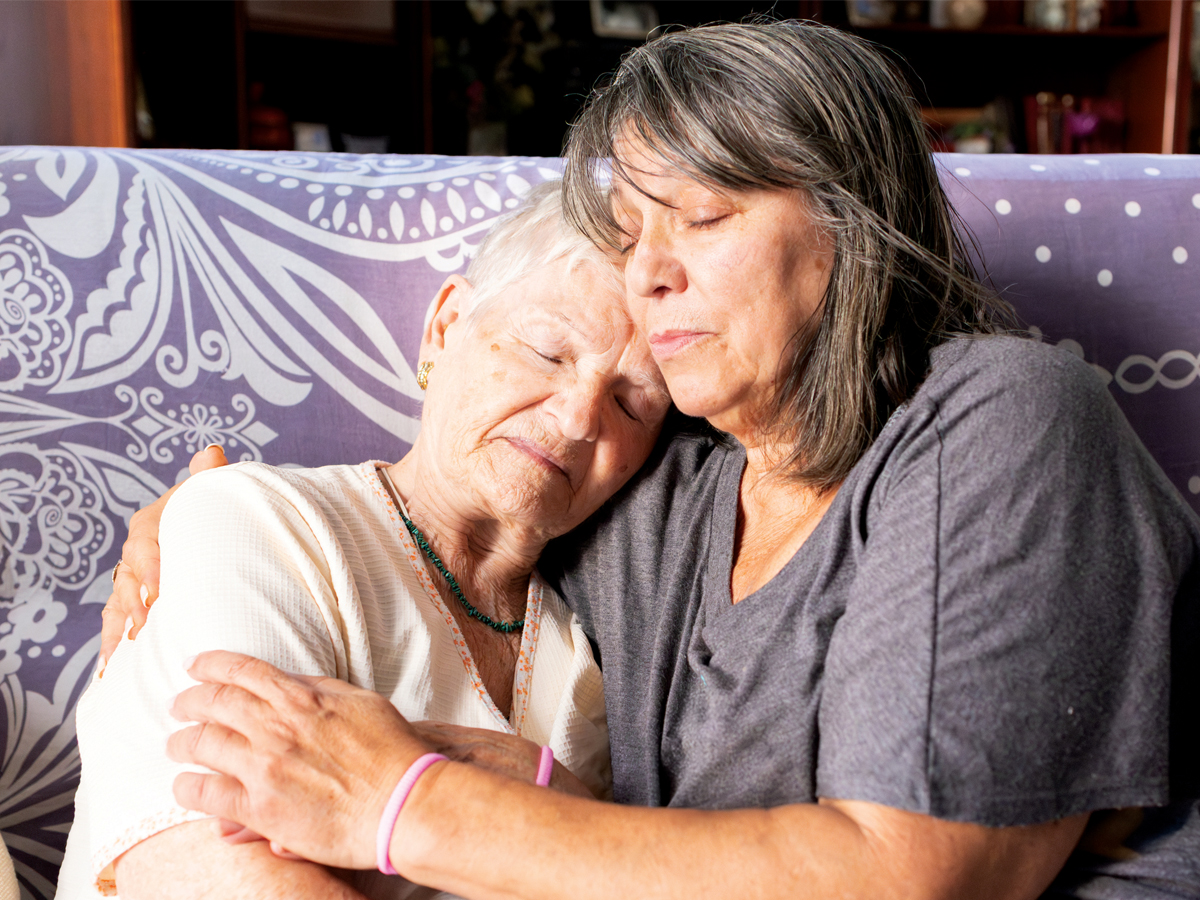A look at causes, risks and prevention
I remember hearing about a friend’s grandpa who went missing one day after dinner. He’d simply left the house and headed down the driveway without anyone noticing. Luckily a kind stranger found him in a nearby park the next morning. Thankfully he was unharmed but he was cold, hungry and confused when the police finally brought him home.
Characterized by extreme disorientation caused by Alzheimer’s or another form of dementia, ‘wandering’ is a term used to describe the act of leaving a familiar place and not being able to find a way back. Wanderers are at risk of incurring life-threatening injuries or accidents as they are usually unaware of their surroundings, lost, and/ or distressed.
When loved ones wander, or are at risk of wandering, it also be extremely stressful for their care partners, friends and family.
Causes of wandering
There is usually something that triggers a person’s wandering. Sometimes, its disorientation brought on by a change of environment that doesn’t feel like home. It could be need to continue a long-standing habit such as going to work, a daily walk or visit to the shops. The person who wanders could be looking for someone, or something, from their past that creates the urge to leave where they are.
Changed sleep patterns or overstimulation, caused by medication side effects or environmental stressers such as loud noises or crowds may also cause a person to feel uncomfortable or confused about where they are. Experts also suggest that someone living with dementia who wanders could be trying to get away from being too hot or cold, feeling hungry or being in pain. Wandering can occur at any time of the day or night.
Early indicators
Oftentimes, it takes a while for family and friends to realize that their loved one has a tendency to wander or is at risk of wandering. These are warning signs/behaviours to watch for:
1) Wanting to ‘go home’ – to a previous residence after a move
2) Pacing, being restlessness or using repetitive movements
3) Taking longer than expected to return from a regular walk or drive later than usual
4) Forgetting how to find their way to somewhere familiar
5) Appearing lost and disoriented in a new environment
6) Undertaking a task then showing signs of confusion or getting nothing done
7) Nervousness and anxiety in busy or loud areas.
Reducing the risk
There are a variety of strategies caregivers and families can invoke to reduce the risk of wandering.
Create a safety plan:
Tips for caregivers and other family members should be included along with a ‘phone tree’ -a system for contacting a large number of people quickly in which each person called then phones a number of other designated people. A clever way to alert family and friends, and a plan to notify local businesses and neighbors. Have an identification kit… just in case.
Psychological strategies:
Try to reassure the person so that they don’t feel alone or unsafe where they are. When spending a day together, pre-emptively review the schedule of events together. Pointing out any activities and appointments in order to give them a clear idea of what is planned. If driving safely, or getting lost on walks becomes a concern, consider a companion, alternate transportation and clear check in times.
Keep a diary of wandering incidents:
Look for patterns and triggers when the confusion and/or wandering occurs and try to distract / keep the person busy during those times.
Remove objects associated with leaving:
Keeping car keys, jackets and shoes out of view can help reduce potential thoughts of wanting to leave
Physical strategies:
Tidy up. Reduce clutter and increase lighting. Place familiar objects so that the person will feel at home.
There are a number of ways to stimulate creativity and encourage physical activity which will also allow for less boredom and more alertness. What’s key is not to leave the person alone in a parked car while you’re running errands or home alone.
Think about creating of indoor or outdoor common areas that are designed for exploring or simple activities that can be enjoyed together. Based on abilities and relevant circumstances, a few suggestions include: throwing a ball, stretching, yoga, painting, singing, listening to music or puzzles and word games.
As well you can also attempt to camouflage doors with paint or posters, to make ‘the way out’ less noticeable. Some experts suggest removing or covering mirrors. Consider purchasing technology like door alarms, bells or sensor mats that alert you when a door is opened by someone trying to leave the premises. Utilize night lights, and safety locks throughout the home.
In conjunction with conversations about the ethical considerations of safety vs privacy, a variety of trackers and cell phone locators have also been used by some families.
Community involvement:
Know the neighbourhood. Alert neighbours, local business and local law enforcement about the individual’s risk for wandering. They may be quicker to recognize if someone appears disoriented or lost and bring them home.
Think through all the places a person may wander to, including former homes, haunts, places of worship or past jobs. Notifying individuals at these establishments can be beneficial as well. Keeping a recent, up-close photo to show others is wise, just in case you need it. Maintain a brief bio as well as a list of interests and places they might head to is key. And, If there is a wandering response service nearby, consider enrolling.
When wandering occurs?
For caregivers and family members losing track of an older adult is frightening. Remain as calm as possible, start search efforts immediately and ask others for help.
If the individual isn’t found in 10-15 minutes, alert the police and local authorities and be sure to explain the lost person’s medical conditions and risk factors. Inform the police if the individual may be in a vehicle, using transit, or has any missing credit cards. Check for other missing items, or clues that may provide information about where they have gone.
When this has happened before, search areas where wandering occurred in the past. Checking local landscapes, such as ponds, and tree or fence lines can be helpful, as many individuals are found tired and confused within brush or brier.
Alert friends and neighbours, and have someone stay at the area of disappearance in case they return. A lot of individuals who wander are found within approximately 2.5 kilometres of where they disappeared.
Reuniting
While you’ll be relieved to find the individual you’ve been hunting for, the person who has been found might be disoriented, anxious or confused. They may also be injured or required medical attention.
Keep things in perspective and do not add to the drama when the person is found. If possible, have someone familiar make a first calm approach. This will hopefully provide a greater level of comfort, safety and relief for the person. Other communication strategies suggested by experts from the Alzheimer Society of British Columbia to minimize both their stress and yours:
1) Approach in a casual manner, and approach from the front to make sure the person can
see you coming.
2) If the person does not wish to return home immediately, walk a short distance with them while speaking calmly and normally.
3) Reassure the person about where they are and why.
4) Talk about familiar things that may trigger a response to return home. For example, you might offer them a cup of tea or suggest that it is time to feed the dog.
5) If they are determined to reach a particular location, consider taking them there or suggest that you will go there together a little bit later.
6) Let them know that you have been worried about them, and will be happy to see them return home.
It is natural to want to ensure that the person you are caring for doesn’t go missing again but this is not something to chastise them for or be angry about. The best approach for everyone it to work together to come up with safety plan that will significantly reduce the person’s ongoing risk of wandering and to better yourselves just in case there is a time where a wandering incidence might happen again.
Anjolina Rankin-West is an editorial assistant with an interest in family caregiving.
A helpful free guide
From the Alzheimer’s Society of British Columbia this is a resource that can assist family members and caregivers with
tips and good advice.
https://alzheimer.ca/bc/sites/bc/files/documents/wandering-and-dementia-a-guide-for-caregivers-interactive.pdf
Photo: iStock














